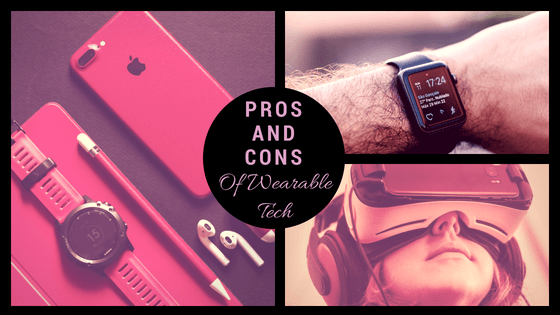Wearable technology: Snapchat Spectacles, Fitbit fitness tracker, Apple Watch, Google glasses.
The concept of wearable technology has been a sought-after market since creative minds put it in mainstream media (yes, I am referencing movies).
One out of six consumers in the U.S. currently owns and uses wearable technology, according to multiple sources. Whether its a watch that allows them to make a phone call or a bracelet that tracks your calories burned, Americans are all in when it comes to technology of the future.
Although the successes of wearable tech are far more discussed than the failures and its impact is further reaching than ever, it remains essential to consider the pros and cons of wearable technology for citizens.
Pro:
Convenient. As a society, one of the top things we look for is convenience, which is one of the most significant selling points of wearable technology. You can easily monitor your progress of exercise or steps are taken without giving it one bit of attention. Other wearable technologies take the convenience even further. For example, the Apple Watch allows users to learn essential news stories, check messages and keep themselves informed with a glance at their watch.
Useful. In 2014, Rackspace and Goldsmiths released a survey that found wearable tech increased the productivity of employees by 8.5% and increased with overall level of job satisfaction by 3.5%. It is suggested that combining wearable tech with particular applications could improve a variety of businesses processes.
Hands-Free User Experience. This aspect is one that is often mentioned when selling products. As we get busier and busier as a society, improvements to wearable tech allow us to do more than ever before. In specific enterprise settings, such as manufacturing and oil and gas companies, hands-on products are very profitable.
Con:
Expensive. The prices for an individual piece of wearable technology are jaw-dropping. For instance, the cheapest version of the Apple Watch costs around $350 and the current Fitbits go from $100 to $250 depending on the features included. The expense of the tech is immediately called to question by the longevity of the products.
Data Accuracy. One of the biggest critical critiques of wearable tech, such as the Fitbit, is the accuracy of its data. There needs more development in the accuracy of each’s physiological measurements, as well as better positioning for sensors to analyze data.
Charging. This is the #1 top issue with wearable technology. Currently, device manufacturers are researching ways to extend battery life, while also looking for a natural charging solution. It seems that the answer to these issues will be wireless charging, which can hopefully lead to actual waterproof tech.


